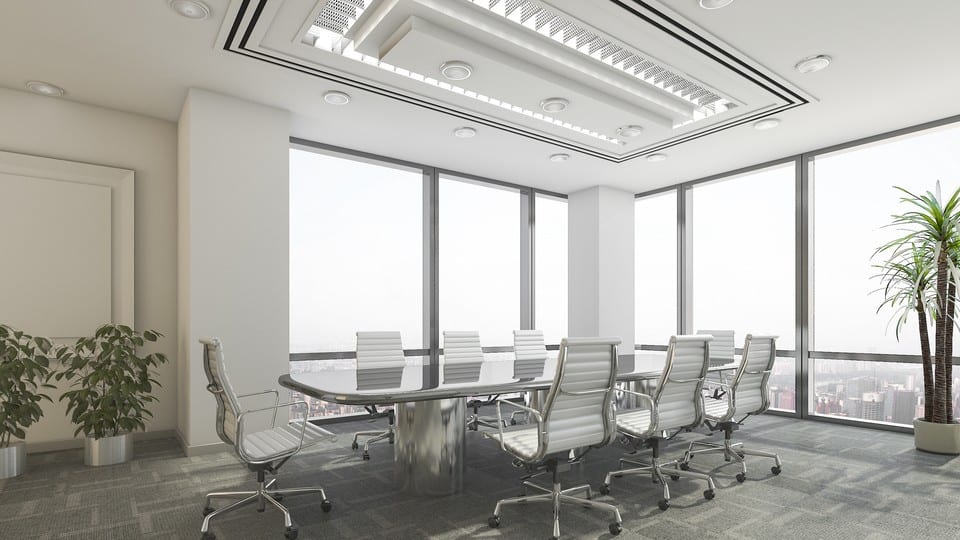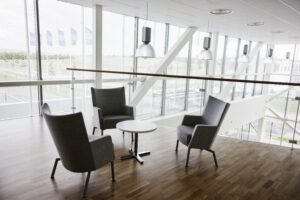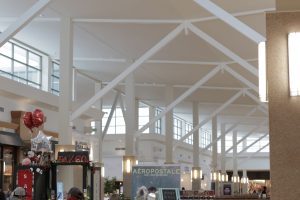Have you ever wondered what your office’s environmental aspects could be changed to improve your employee’s mood and productivity? Well, the answer might be just over your head!
I may be time to change out the lighting in your business to improve your employees’ and customers’ productivity, moods, and health. Here some commercial office lighting ideas that can achieve this goal.
As American office workers, we spend at least one-third of each weekday in the office. While everyone’s goal is to have a successful and productive workday, often something as simple as lighting impedes our ability to do so. A study conducted by the American Society of Interior Design disclosed that 68 percent of employees complain about their offices’ lighting situation. This substantial number implies that many employers could be making the same mistakes.
While natural lighting is the most desirable solution, we can’t all grab our desks and work outside every day. However, we can implement the science of the human mind’s response to light to improve mood, productivity, and success.
The temperature of light, measured in Kelvin (K), is a numerical measurement of the emitted color when an object is heated to a high enough temperature. As the temperature increases, the object changes colors and emits specific colors of that light.
Higher color temperatures (4,600K or more) appear blue-white and are called cool or daylight colors. A typical sunny day is about 5,000K or 5,500K and is considered a cool color.
Mid-range color temperatures (3,100K–4,600K) appear cool white. Sunset is about 4,000K and is considered a cool white color.
Lower color temperatures (up to 3,000K) range from red to yellowish-white in tone and warm colors. The glow-from-the-fire lighting is about 2,000K and is considered a warm color. (/)
Studies show that working under “blue-enriched” light bulbs that are 17,000K increases work performance by supporting mental acuity, vitality, and alertness while reducing fatigue and daytime sleepiness.
Researchers at the University of Greenwich found in a two-month study that the workers they put under “blue-enriched light bulbs” reported feeling “happier, more alert and had less eye strain.”
Other benefits of blue light include lowering melatonin, which is created in our glands and puts us to sleep. This lower level of melatonin keeps people alert in the same way coffee does.
According to the article, with so many brainpower benefits, blue or cooler light should be kept in brainstorming rooms where you want people to feel invigorated and excited to share their ideas.
On the other hand, since warmer tones tend to create a sense of comfort. Use this kind of lighting in more intimate settings where you want workers to feel calm and relaxed, perhaps in a meeting room where you want to emit trust.
Conference rooms should have middle tones that produce a friendly and inviting environment and cool enough tones to keep workers alert and motivated.
Throughout the day, the light also needs to change since space acts as a working organism, according to Felderman and Keatinge. Earlier in the day, lighting in the office should be cooler and blue. It should gradually change to a warmer, yellow color as the day progresses.
The most innovative companies are already discovering the power of strategic lighting.
The next time you find yourself eager to get into the office in the early hours and a better mood, it’s possible that new lighting has changed your rhythm and given you a slight advantage.






